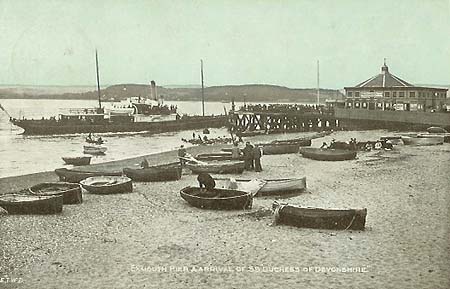On Tuesday 26th August 1930 there was a sea mist on the South Devon coast. This didn't deter the Exmouth holidaymakers who crowded aboard those two famous old paddle steamers, 'the Duke and Duchess of Devonshire'. Both ships had been built in the nineteenth century and, although nobody on board knew it, they had only a few more years to serve the struggling Devon Dock, Pier and Steamship Company. The ships arrived safely in Torquay and the visitors had their trip ashore but in the evening the mist became thick fog. The ships steamed off and tried to bring their passengers home to Exmouth. The 'Duchess' left Torquay first and she reached Teignmouth but by then the fog had become so dense the captain decided to sail no farther. The 'Duke' left Torquay and came round Hope's Nose only to find conditions worsening. There was a heavy tide running so the captain decided to take his ship back to Torquay to keep out of harm's way.
This left the Dock Company with the challenge of how to return the passengers to their beds in Exmouth. The decision was made to send them by train to Starcross and then across the foggy Estuary by the Starcross steam ferry. The little steam launch ferry butted to and fro through the fog, not once but several times, and brought nearly all the passengers safely home across the Exe. The tide prevented the steam launch making her last journey and the unlucky passengers who were still in Starcross then came home by train via Exeter. It was said to have been the thickest fog on the river for eight years.
I like to think that the trippers, especially the children, enjoyed the adventure. No doubt there was something of a Dunkirk (still ten years away!) spirit as they escaped from the beaches of Starcross.

